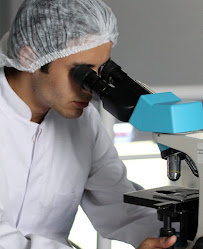The Role of Pharmacovigilance in Clinical Trials
 |
Clinical Research Training |
Pharmacovigilance, also known as drug safety, is a broad term that describes the collection, analysis, monitoring, and prevention of the various side effects of the drugs and treatments. This is completely a scientific and process-oriented pharmaceutical field.
It is perhaps the most important
function of a life sciences company. Companies
must follow strict rules to develop, manufacture, and
commercialize pharmaceuticals. Most of these regulations focus on patient safety and the added benefit of the drug to the patient. In short, this is the task of drug safety and highlights why this field plays
such a central and important role in the area of medicine.
Why is it important?
Safety and Well- being of Patients:
Drug safety ensures the safety and well-being of patients
throughout the drug development life-cycle, including when the drug is already in
the market. In fact, the drug is
constantly monitored for any other side-
effects in patients, and all new data is collected and
reported regularly to the health authorities. While other disciplines too;
focus on improving patients' lives in everything they do.
Maintain Safety Records:
Pharmacovigilance services in India
are provided by qualified and
experienced clinical research professionals. It not only helps to maintain a safety
record of all minor and major security
incidents, but also helps prevent these security breaches with thorough reports.
A Case Safety Report (CSR) is a report
that addresses the difficulty experienced by
each person participating in the trial as a participant. Once the relevant data is used for
existing projects, these reports are archived for other future projects.
Project-specific
Safety Approach:
Reporting safety-related adverse events (SAE) is an important step in a drug development process. Authorities examine SAE reports and other drug development documents. The service provider assists the project sponsor by collecting all the necessary documents that must be sent to the authorities for drug evaluation. And finally, the evaluation process leads to approval or rejection of the drug, which determines whether the drug will be produced for the public or sent back to a laboratory for further studies.
Thus, PV helps patients recover and perform optimally or ideally. Disease prevention is the shared responsibility of industry, drug regulators, clinicians, and other healthcare professionals to increase their contribution to public health.
Steps
in Pharmacovigilance Program:
·
Safety data management
·
Signal detection for any new altered
safety issue
·
Signal evaluation and making
decisions with regard to safety issues
·
Actions, including regulatory, to
protect public health
·
Spontaneous reporting
Hence, with the advent of pharmacovigilance, the process of using medicines has been simplified and transparency regarding drug safety has been provided to the general public. With the expansion of it as a science of improvised medical solutions, the pharmaceutical industry is steadily seeing a standard shift to a medical care that is safe and reliable for everyone!
Comments
Post a Comment